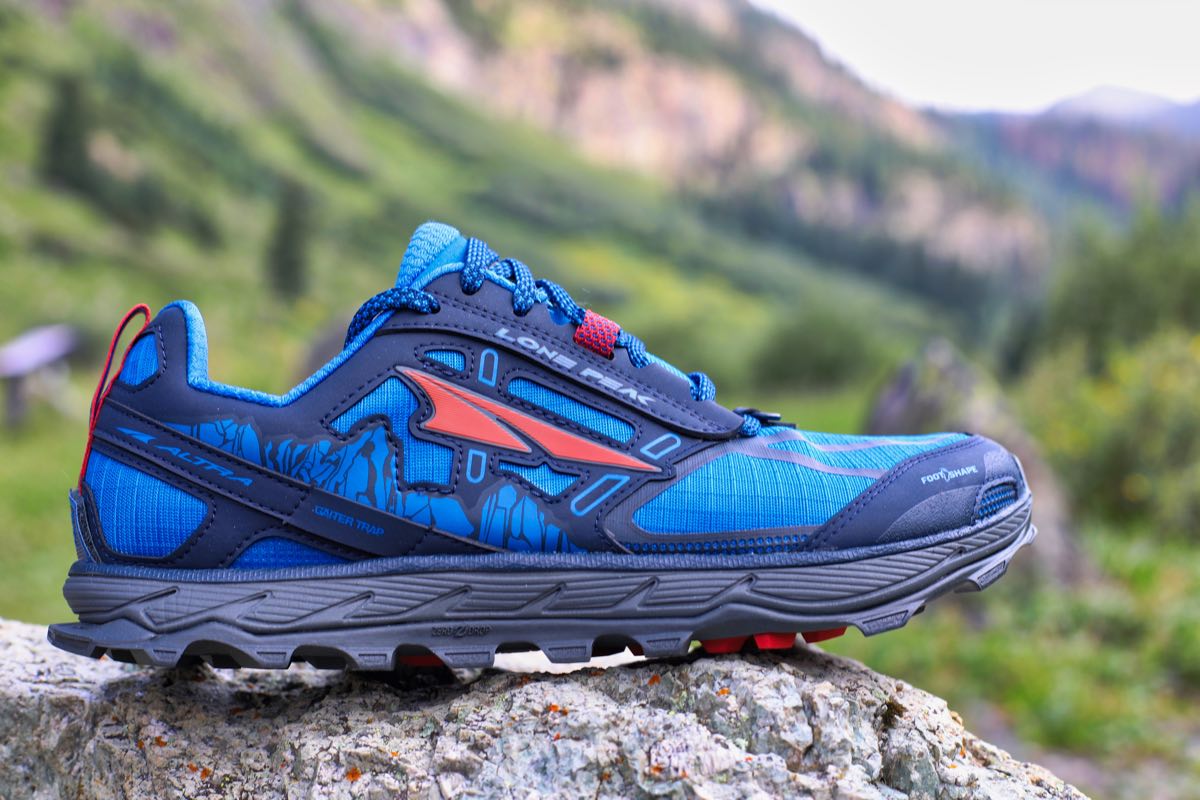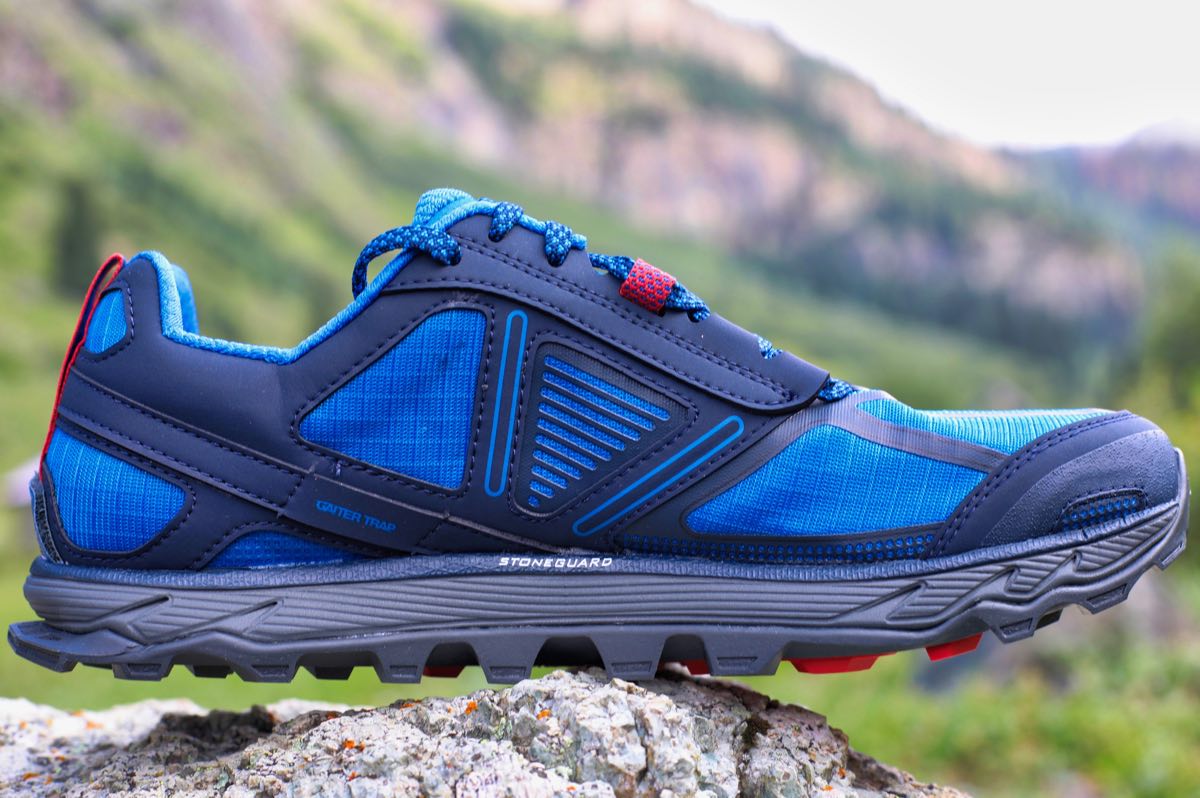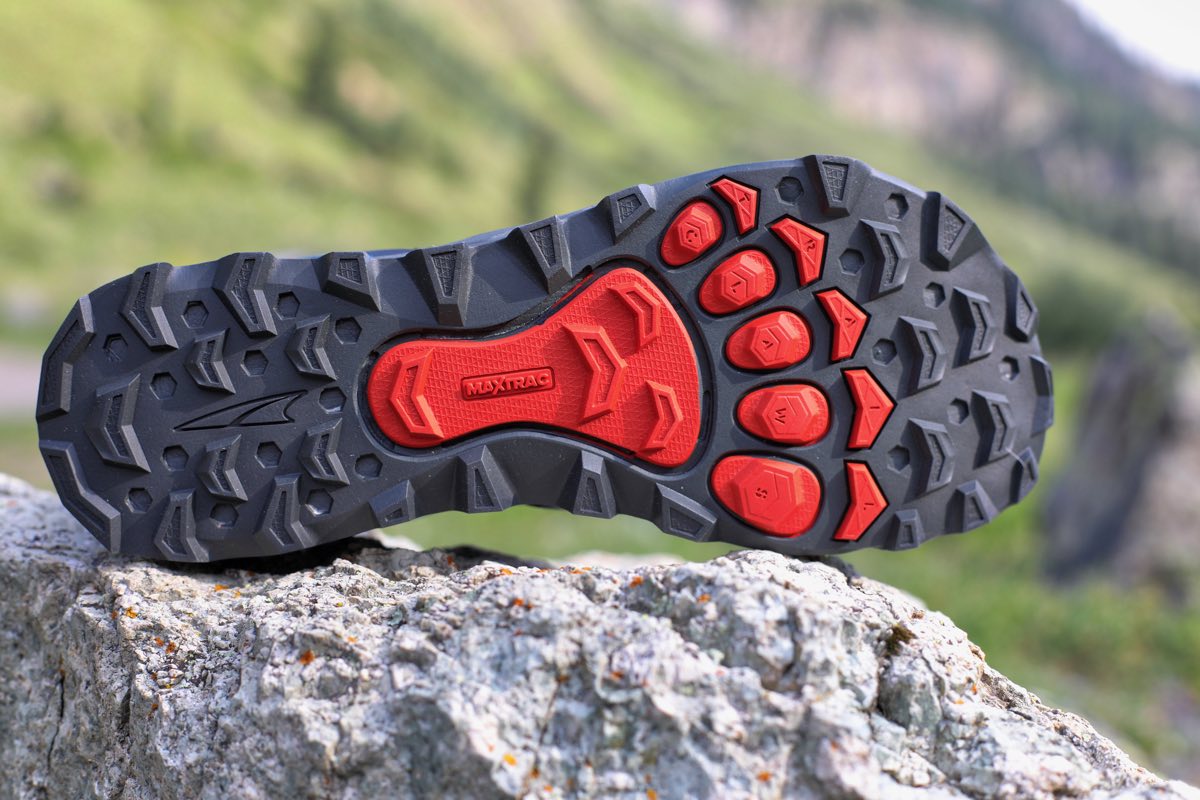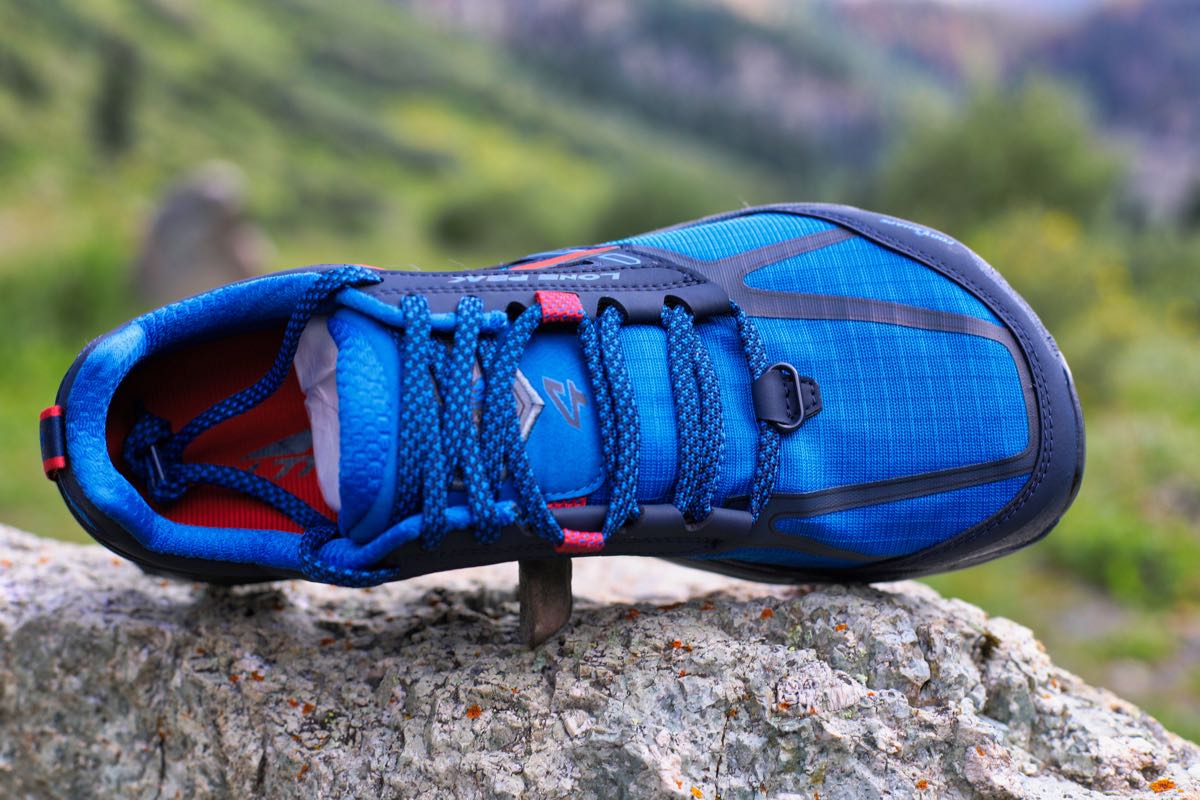Check out our Altra Lone Peak 9 review for the latest on the Lone Peak family of trail running shoes.
Our Favorite Trail Running Shoes
Check out our Best Trail Running Shoes article to learn about our current favorite trail running shoes!
Altra Lone Peak 4 Review
The Altra Lone Peak is a trail shoe that has earned its place in the pantheon of all-time-greatest ultrarunning shoes. From Appalachian Trail and Pacific Crest Trail thru-hikers to every level of 100-mile ultrarunners, the Lone Peak has become a standard for long-haul foot comfort and durability. In the Altra Lone Peak 4 ($120), Altra seems careful to keep true to the Lone Peak heritage, with only a few improvements and updates.
What runners and hikers have come to love about the Lone Peak could also prohibit its future progress. As with any beloved running-shoe model, changes here could cause a backlash of allegiance. Personally, I’ve long been a fan of the Lone Peak, and what follows is a somewhat constructively critical perspective on ways that the Lone Peak has improved as well as a discussion of the shoe’s features that remain stagnant.
Altra Lone Peak 4 Upper
Runners obviously and obsessively love the Lone Peak because of the fit, and Altra makes few changes here. Improved lacing and a stay-put tongue add to a heel cup that hugs better than ever, and I can honestly say that this is the best-fitting Altra upper I’ve ever worn (besides the Superior 3, which is almost identical). For lack of a better comparison, when I put on the Lone Peak 4 in the morning after waking up with stiff feet, it feels like the bedroom slippers I’ve just removed. Soft, custom shaped, and well cushioned, this is a shoe I would love to wear for everything all the time. More on that later…
Altra has enjoyed such a loyal following with the Lone Peak that it almost becomes difficult to criticize each model without inviting some backlash. While the Lone Peak 4 employs a much more durable ripstop-mesh upper material, one of the areas that designers have tried to improve upon is the poor drainage of past models. Altra uses open mesh and minimal overlays in areas around the pinky and big toes as well as the heel to improve drainage, yet I found the Lone Peak 4 to stay fairly soggy after creek and river crossings. I think this mostly has to do with the durable and absorbent nature of the ripstop material, which never showed signs of significant wear in almost 300 miles of testing. However, this isn’t a model I’d wear for an ultra in soggy conditions.
Ultimately, I’ve seen very little wear throughout this upper that I have definitely put it through its paces. The wear I’ve noticed is along the medial side of the heel collar, which seems to be an issue for a variety of runners. The heel collar has gotten thinner and more flexible, which is welcomed, but the wear is surprising. Regardless, the Lone Peak 4 offers long-haul comfort that has no comparison. This is by far the best Lone Peak upper amongst all past models, especially when it comes to technical terrain and steep downhills. In past Lone Peak models, steep downhills meant sliding forward and jamming my toes into the front of the shoe. But, with the 4, the midfoot and heel feels locked down enough to keep everything in place on even the steepest terrain.
Altra Lone Peak 4 Midsole
The Lone Peak 4 continues to maintain a reported 25mm stack height, of course with the zero-drop aspect of Altra shoes. Initial runs in the Lone Peak 4 felt responsive and forgiving, but runs after putting 50 miles on the shoes felt somewhat dead and exposed. I am a midfoot/forefoot runner and I noticed the deadening of the Lone Peak’s midsole very quickly, which led to sore feet after long runs.
Curiously, Altra has continued to use its A-Bound midsole compound on this model, which seems to deaden quickly, especially in the forefoot. In the past, I’ve lauded this midsole compound for its comfort and resiliency, and I’m puzzled as to why the midsole in the Lone Peak 4 seems to flatten so quickly. Especially with the development of Altra’s EGO midsole foam, there really isn’t an excuse to use an unresponsive midsole material. For instance, with the Altra Escalante road shoe, I’ve enjoyed a ton of miles in a lightweight, low-stack-height, zero-drop shoe. That midsole has maintained resiliency over 150 miles despite being basically a road-racing flat.
I have appreciated the new StoneGuard, which is a piece of TPU plastic that is segmented to work more like a human rather than a solid piece of plastic throughout the shoe. The way the new Altra StoneGuard works is that it is grooved and flexes with the protection that the runner needs rather than seeming to ricochet off of rocks as in past models.
Altra Lone Peak 4 Outsole
Altra made a lot of changes to the outsole of the Lone Peak 4 using its MaxTrac outsole, which seems to both wear prematurely and provide marginal traction. In wet conditions, the MaxTrac outsole is downright scary at times, especially over wet rock. Compared to other Altra models, I’ve been very disappointed with the outsole rubber’s durability. This outsole seems to add a great deal of weight to the Lone Peak 4, which causes the shoe to weigh in at well over 11 ounces for my men’s size 10 U.S.
Altra Lone Peak 4 Overall Impressions
When designing one of the most beloved trail running shoes currently in existence, I can understand how one would become reluctant to change any aspect of the shoe. The Lone Peak is a model seen on the feet of many runners at the start of any ultra, but has it really improved? With this iteration, Altra has designed the best-fitting Lone Peak ever while letting other aspects of the shoe become obsolete. Most notable, the midsole material is completely lacking compared to its competitors, and Altra already produces superior midsole foams that would make the Lone Peak the best trail shoe in their line-up. What they risk, understandably, is the alienation of ultrarunners and thru-hikers who have come to worship the Lone Peak as an essential piece of gear. But, what’s good for an ultrarunner versus what’s good for a thru-hiker are two separate ideologies. Obviously, a runner’s intention is to go faster.
Altra would do well to look to their own designs and materials to create a Lone Peak encompassing what truly makes it great (the fit and StoneGuard) with what could make it incredible (updated midsole foam and a more effective outsole). I’m looking forward to where this company is going, and I think their road-shoe line has responded better to market changes than their trail shoes simply because ultrarunners are resistant to change and clamor for the same product repeatedly, and we are to blame for this as a consumer base. Altra, as a company, has been embraced for their rejection of technology that was unsupported and seemed antiquated, and to progress they need to embrace this mission rather than pandering to the purists in our tribe.
Call for Comments (from Meghan)
- What do you think of the Altra Lone Peak 4 overall? And for those who’ve worn previous Lone Peak models, what do you think of the updates which have been made to this version?
- What do you think of the reviewer’s praises and criticisms of the Lone Peak 4? Do you like the upper’s fit? What do you think of the StoneGuard’s protective abilities? How do you feel about the midsole? And do you also have problems with outsole traction in wet conditions?
[Editor’s Note: If you’re affiliated (i.e., an employee, ambassador, etc.) with a shoe brand, please share your relation in each of your comments on this article. Thanks!]





